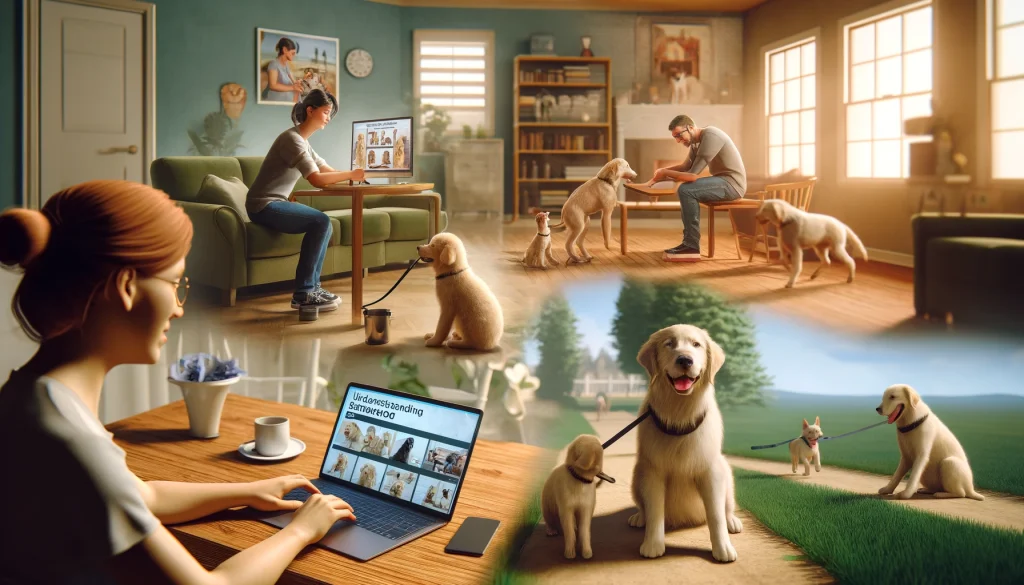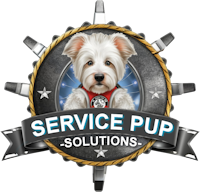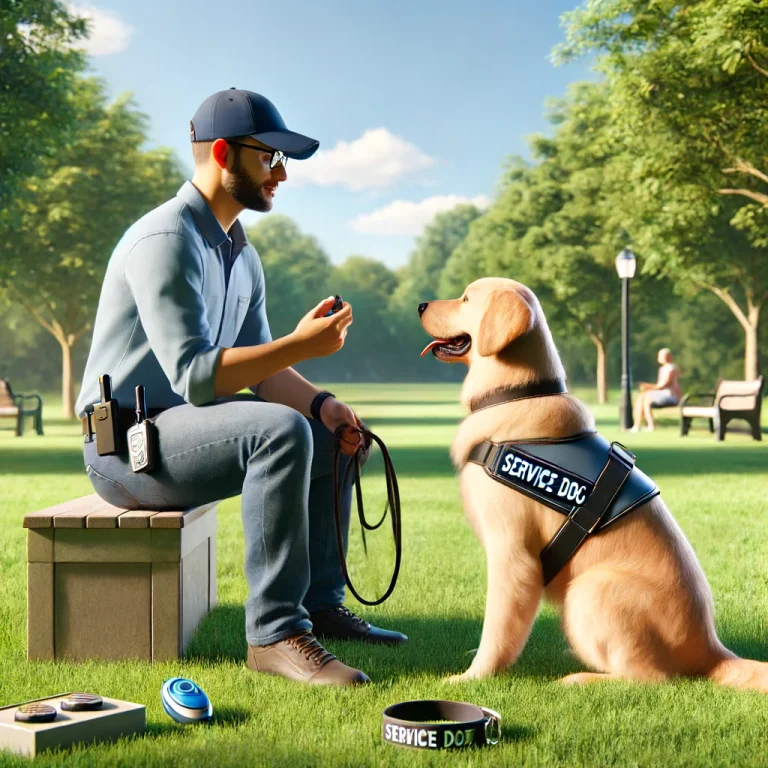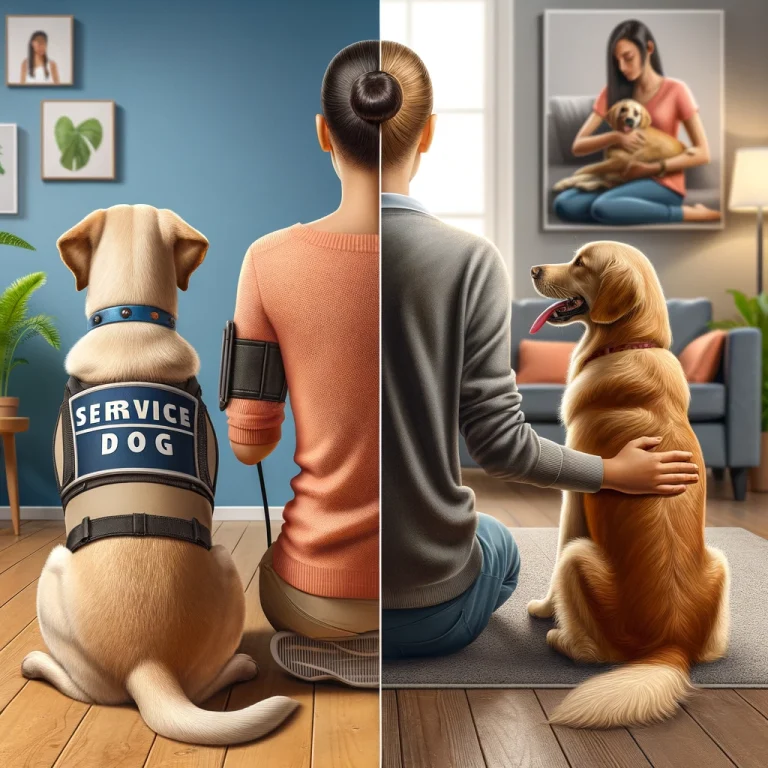Bringing a service dog into your life is an exciting and transformative experience. However, the first year of training is crucial to ensuring your service dog becomes a reliable and effective partner. Understanding the stages of First Year Service Dog Training, recognizing Puppy Development Milestones, and following New Service Dog Owner Tips will help you navigate this journey successfully. This guide will provide you with the knowledge and tools to make the most of your service dog’s first year.

Understanding First Year Service Dog Training
Training a service dog is a structured and gradual process that begins the moment you bring your puppy home. The first year lays the foundation for advanced training and ensures your dog is well-prepared for their future role. Self-training options are available through ServiceDogOwners.com, providing valuable resources and guidance throughout this journey.
Early Socialization and Exposure
The initial months are critical for socializing your puppy. Exposing them to various environments, people, and other animals helps them become well-adjusted adults. Take your puppy to different places like parks, stores, and busy streets. Ensure these experiences are positive, using treats and praise to create good associations.
Basic Obedience Training
Basic obedience training starts as soon as your puppy is settled in. Focus on essential commands such as sit, stay, come, and heel. Keep training sessions short and fun to maintain your puppy’s interest. Consistency in commands and rewards is key to reinforcing learning.
Intermediate Training
As your puppy masters basic commands, you can introduce more complex skills. This includes commands like leave it, drop it, and wait. Public manners are also important; train your dog to walk calmly on a leash and ignore distractions. Start introducing simple tasks related to your disability, such as retrieving objects or pressing buttons.
Advanced Training
By the end of the first year, your puppy should be ready to start advanced training. This involves task-specific training tailored to your needs, such as medical alerts, mobility assistance, or emotional support tasks like Deep Pressure Therapy. Ensuring your dog can handle various public settings and respond to unexpected situations is crucial.

Recognizing Puppy Development Milestones
Understanding your puppy’s development stages will help you tailor your training approach and expectations.
0-8 Weeks: Early Development
During the first eight weeks, puppies are typically with their mother and littermates. This period is crucial for learning basic social skills. By the time you bring your puppy home, they should be ready to start gentle socialization and basic training.
8-16 Weeks: Socialization and Basic Training
This is the ideal time for intensive socialization. Introduce your puppy to a wide range of experiences, people, and animals. Start basic obedience training with commands like sit, stay, and come. Use positive reinforcement to encourage desired behaviors.
4-6 Months: Building on Basics
At this stage, your puppy should have a good grasp of basic commands. You can start introducing intermediate training and public manners. Short, frequent training sessions work best to keep your puppy engaged.
6-12 Months: Preparing for Advanced Training
As your puppy approaches their first birthday, they should be comfortable with intermediate commands and public manners. Start focusing on advanced skills specific to your needs. This is also a good time to start public access training, ensuring your dog can behave appropriately in various settings.
New Service Dog Owner Tips
Being a new service dog owner can be overwhelming, but these tips will help you manage the process effectively.
Consistency is Key
Consistency in commands, routines, and rewards is crucial for effective training. Make sure everyone in your household uses the same commands and training methods to avoid confusing your puppy.
Positive Reinforcement
Positive reinforcement is the most effective training method. Reward good behavior with treats, praise, and affection. Avoid punishment, as it can create fear and anxiety in your dog.
Patience and Persistence
Training a service dog is a long-term commitment that requires patience and persistence. Progress may be slow at times, but consistency and positive reinforcement will yield results.
Regular Vet Visits
Regular veterinary check-ups are essential for your puppy’s health. Ensure they receive all necessary vaccinations and preventive care. Pet insurance can help cover unexpected medical expenses and provide peace of mind.
Invest in Quality Products
Investing in high-quality service dog products is crucial. This includes vests and harnesses for identification, training tools like clickers and treat pouches, and health items like grooming supplies and a balanced diet. ServicePupSolutions.com offers a range of products to support your service dog’s training and daily needs.

The Importance of Pet Insurance and Service Dog Products
Ensuring your service dog’s health and comfort is vital for their effectiveness. Pet insurance provides financial protection for unexpected medical expenses, ensuring your dog receives the best care without causing financial strain. Look for policies that cover routine care, emergencies, and chronic conditions.
Investing in high-quality service dog products is also essential. These products ensure your dog is comfortable, identifiable, and well-equipped for their tasks. ServicePupSolutions.com offers a wide range of products to support your service dog’s training and daily needs, from vests and harnesses to training tools and health items.
Real-Life Success Stories
Emily and Max
Emily, a young woman with diabetes, successfully trained her service dog, Max, starting with puppy development milestones and progressing through first year service dog training. Today, Max alerts Emily to low blood sugar levels, helping her manage her condition with confidence.
John and Bella
John, a military veteran, trained his service dog, Bella, to help manage his PTSD. With the help of non-profit organizations and online courses from ServiceDogOwners.com, John taught Bella to perform tasks such as interrupting anxiety attacks and providing Deep Pressure Therapy. Bella’s support has significantly improved John’s quality of life.
Sarah and Luna
Sarah, who has multiple sclerosis, trained her service dog, Luna, to assist with mobility tasks such as retrieving items, opening doors, and providing balance support. Through consistent training and dedication, Sarah and Luna have become an effective team, enabling Sarah to live more independently.
Conclusion: Navigating the First Year of Service Dog Training
The first year of service dog training is a critical period that sets the foundation for your dog’s future success. By understanding the stages of first year service dog training, recognizing puppy development milestones, and following new service dog owner tips, you can ensure your service dog is well-prepared to support you effectively. Self-training options available through ServiceDogOwners.com can provide valuable resources and guidance throughout this journey.
By following this guide and investing in the right tools and resources, you can successfully navigate the first year of service dog training. Your journey with your service dog will not only improve your quality of life but also create a strong bond of trust and companionship.
At ServicePupSolutions.com, we are committed to providing the best resources and products to support your service dog’s training journey. Explore our range of products and support to ensure your service dog is trained effectively and economically.
Searching for a way to boost your income while keeping your service dog by your side? Learn how Digital Marketing and Affiliate Marketing can launch your Side Hustle or new career and increase your earnings alongside your loyal companion. Click Here to find out more and start your journey today!





